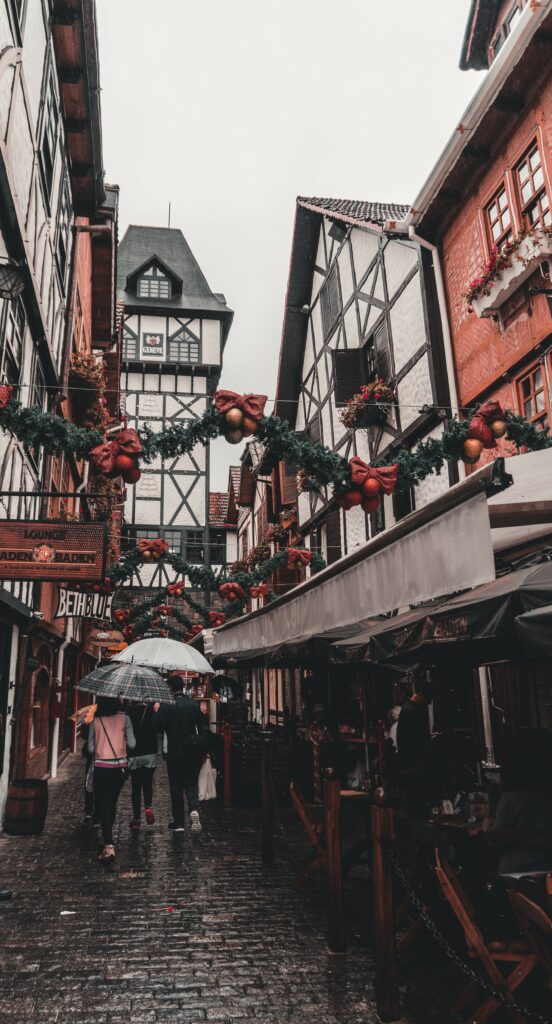Constraints, consume and waste. For most, Christmas in 2022. But is there still much left of the festive spirit? Not really.
For years, I have regarded Christmas as a chore rather than a festive act. I would rush into the centre of town at the very last moment because I wanted to gift every single acquaintance that I had. Within a few hours, I had collected and wrapped every present ever so swiftly. But when really thinking about it, you realise that this blind consumerism is not festive at all. Bigger, brighter, more expensive — That’s the motto for most on Christmas. No one is holding back on the money they spend. Christmas sales are making up at least 20 percent of the annual revenue. It proves to show: For Germans, Christmas is all about buying. An expensive watch for the partner, Christmas decoration kitsch for the neighbour next door or a remotecontrolled racing car for the children that will not be of use nor interest and will two days after intensive care be collecting dust in the corner or doesn’t even function anymore. What stays is an empty wallet, mediocre memories of another Consumer-, pardon, Christmas and of course, a few kilogrammes more on the scale from eating too much of the sumptuous Christmas dinner which’s leftovers no one was able to indulge. It isn’t so much about the high personal or emotional value of the act of gifting, rather than the competition of the best present. One wants to be able to boast and brag about how much money went into gifting and invests hours into extravagant packaging for the short “wow-factor” before the wrapping is finally being torn into pieces. Not seldomly, on the obligatory annual festive visit, extended family does not even rely on proper presents anymore but resorts back to randomly picked cards with cats or to a greater or lesser extend funny joke and a bit of cash.
Money, money, money

But with such consumer behaviour, the only ones profiting ultimately are retailers, although the argument could still be made that one only wants to strengthen the local economy. Only large corporations like Amazon, which are increasingly responsible for the extinction of inner cities due to poor working conditions and cheap massproduced products, derive the greatest benefit from this behaviour. What happened to the celebration of altruism? Where has the time of visiting and gifting your family and friends out of affection gone rather than pure responsibility and social pressure? Since the 19th century scientists, politologists and sociologists have been disputing the subject of gifting. American economist Gordon Tullock went as far to say that a gift is always intended to increase one’s own standing and reputation, and in 1996 the economists Amihai Glazer and Kai Konrad theorised that gifts should always symbolise your own prosperity outwardly as well. So much for the altruistic festival of charity and the colourfully wrapped packages under the Nordmann fir.
O Christmas Tree

Speaking of the Christmas tree, the mindless consumerism naturally doesn’t end with the presents. Around 30 million fir trees were felled in 2019 for a simple tradition, and that trend is rising. That’s 30 million trees that fill homes with needles for a few weeks and will be thrown on the side of the road by the new year at the latest, according to the motto “Out of sight, out of mind”. There is already a more sustainable alternative with reusable fir trees in pots. At the current tree prices, it pays for itself after just one year and is also significantly more environmentally friendly. But humans are creatures of habit and what our ancestors did hundreds of years ago seems perfectly fine from that point of view. The fir tree in the living room is heavily hung with sparkling baubles, tinsel and flashing fairy lights in an exemplary household naturally hoarding boxes of Christmas tree ornaments in the cellar or attic in order to be prepared for the next tree decoration trends every year. Of course, this does not stop at private households. In addition to that, cities also have to jump on this trend on a much larger scale. The “Douglas fir” on Halle’s market square is a full 25 metres tall and illuminates the Christmas market with over two thousand LED lights. In January, that majestic fir will probably disappear again. But does the fest of contemplation really have to take place like this annually? For my part, I will devote this year’s Christmas entirely to altruism. Baking cookies with my flat share, a small fir tree in a pot and no shopping spree a few days before Christmas but instead, well thoughtout, personalised gifts for those people who really mean a lot to me in life.
Text: Till Menzel
Translation: Marlene Nötzold
Pictures: Any Lane, Kaique Rocha (via Pexels)
